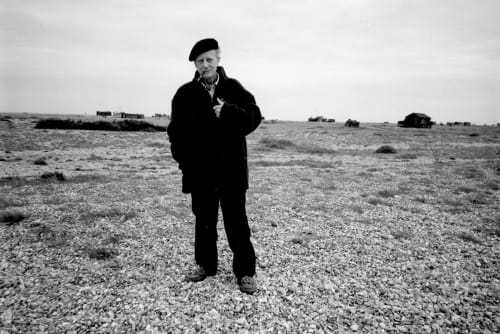Liam Hanley was a self-taught artist, best known for his landscape paintings of the English countryside. Born in Kensington in 1933, Hanley was surrounded by creative individuals: his father, James Hanely and godfather, John Cowper Powys were novelists and his mother Dorothy, an artist and writer. Hanley claimed his mother taught him the importance of looking. After moving to Montgomeryshire, Hanley went on to study at Wrekin College, Shropshire in 1946. Between 1951-53 he joined the Royal Marines serving in Malta, Libya and Egypt.
After military service, Hanley began a career in journalism working at ITN from 1962 until his retirement, when he became a full-time artist. Throughout his time at ITN, Hanley always showed interested in art, travelling regularly to paint while taking evening classes at the Central School of Art. His focus was mainly on the Welsh countryside until his parents’ move in 1963, when he then discovered the small rural landscape of Royston in Hertfordshire.
Hanley’s oeuvre shows strong inspiration from mid-century British and American artists. Inspired by the likes of Paul Nash, Eileen Agar, Ben Nicholson, John Rogers Cox and Victor Pasmore, Hanley incorporates Surrealist elements and abstracted Constructivist line and pattern in his landscapes with a sense of playfulness and musicality. Further paintings in oil and watercolour explore the subject from a more literal viewpoint, utilising soft pastel tones and flowing form to lyrically capture the beauty of the rolling countryside fields.
Hanley was regularly selected for the Royal Academy Summer Exhibitions as well showing works at the Royal Society of Arts, Beardsmore Gallery and Crane Kalman Gallery, London. In 2016, Chappel Galleries, Essex held the first retrospective of his paintings.
Portland Gallery is delighted to exclusively represent the Estate of Liam Hanley.
